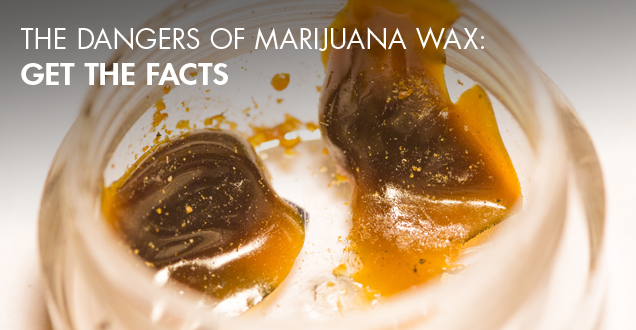
While cannabis may be legal to smoke in some states, there are laws in place that prevent individuals from smoking in public areas. As a result, the consumer has developed a way around this through the production of marijuana wax. Since the wax can be ingested by using an E-Cigarette or Vaporizer, it gives off the illusion that the individual is smoking vape, which is less regulated. In addition, one hit of wax can be up to four times as potent leading to its growing popularity. (cite reference)
What Is Marijuana Wax?
Marijuana wax is derived directly from marijuana and is commonly known as Butane Hash Oil (BHO), honey oil, budder, and shatter. The wax contains a higher concentration of Tetrahydrocannabinol (THC) extract than cannabis, which is the chemical responsible for the psychological effects on the brain. Wax resembles honey or candle wax and is most commonly smoked through a bong or e-cigarette. It can also be applied topically or added to food. The more potent and powerful concentration of THC leads to an immediate feeling of euphoria.
Who Is Marijuana Wax Most Frequently Sold To?
Teenagers are the most at-risk age group to being exposed to marijuana wax. Many teens smoke marijuana wax from a dab pen and often use these pens because of their convenience. What some teens don’t know, is the high health risk associated with wax and dabs. They may believe that they are just hitting a pen with watered down cannabis oil; however, the concentrated strength of dabs could pose serious health risks.
How Is It Made?
Marijuana wax is mainly made up of two ingredients: cannabis and alcohol. Different alcohols require distinct methods to extract the oils from the marijuana and are associated with different risks. The two most common methods of production are BHO/Butane Hash Oil and Isopropyl.
Method 1- BHO/Butane Hash Oil (Most Common)
The dried cannabis is stuffed into an open-ended tube where one end is covered by a filter (most commonly a coffee filter) and the other end is closed. Butane is injected into the tube and causes the oils to extract from the plant. The combination is drained into a container and heated at extreme temperatures until the wax is produced.
Method 2 – Isopropyl
When using isopropyl alcohol, the cannabis is first soaked in the alcohol for a period of time before being drained into a container. The liquid from the soaked mixture is then heated at an extremely high temperature until most of the alcohol evaporates and wax is produced.
The concern with the production of marijuana wax is that many individuals are attempting to make it at home. Due to the high temperatures needed to combine marijuana with butane and isopropyl alcohol solutions, there is an extremely high risk of accidental fire which can lead to property damage, personal injury or death. The increased popularity of making the marijuana wax at home has led many states to propose strict laws to regulate the growing problem.
What Are The Health Risks Associated with Marijuana Wax?
It is common to use low-quality alcohol to make the process faster and cheaper leading to serious side effects and extreme harm to the consumer. Recent studies have linked the use of marijuana wax to irreversible brain damage. In one case, after ingesting the substance a young high school student was left unconscious and awoke with 75% of his cognitive abilities damaged. (cite reference) The high potency of the wax has proven to increase the risk of an accidental overdose. In addition, the hallucinogenic effects of the drug have been linked to paranoia, psychosis, and hallucinations which can last for days.
Since wax is directly derived from cannabis, it poses similar health risks such as:
● Impaired judgment
● Poor concentration
● Short-term memory loss
● Impaired motor skills
● Suppression of the immune system
● Personality and mood changes
● Reduced sexual capacity
● Sensory distortion
The high potency of THC highly increases the risk of:
● Vomiting
● Severe withdrawal symptoms
● Paranoia
● Anxiety
● Severe psychological symptoms
Butane causes serious side effects because not all of the butane is always burned off in the process of creating the wax. The butane left in the substance poses various health risks including:
● Permanent damage to the brain and central nervous system
● Increased heart rate
● Loss of consciousness
What are the Dangers of Dependency?
As with any substance, the potency of THC and the euphoria experienced can lead to dependency and abuse in search of the “next big high”. Due to its odorless and discrete nature, it is becoming increasingly popular among high school students and young adults. Though there are numerous risks associated with this trend, the biggest concern may be that individuals are quickly getting swept up into the drug culture. The wax has the potential to act as a gateway drug to harder substances that can produce an even bigger high. If you or someone you know is at risk for abusing marijuana wax or any other substance, Casa Palmera can help find the program that best supports the individual who is struggling with substance addiction.
Resources:
Crombie, N. “Butane hash oil: Dangers shadow the quick, powerful Marijuana high.” The Oregonian. 12 May 2014. Web. 23 May 2016.
“‘Dabbing’ Marijuana Is Gaining Popularity, But Is It Dangerous?” Medical Daily. N.p., 15 June 2015. Web. 01 June 2016.
“FindLaw’s California Court of Appeal Case and Opinions.” Findlaw. N.p., n.d. Web. 01 June 2016.
Jackman, Caressi. “‘The Dangers of Dabbing'” ABC 12 News. N.p., 7 May 2015. Web. 23 May 2016.
“Marijuana “Dabs” Proven To Cause Irreversible Brain Damage.” National Report RSS. N.p., 28 Feb. 2015. Web. 01 June 2016.
Velardo, M. “Hash oil dabbing, drug’s popularity growing among teens.” Examiner. 17 September 2013. Web. 23 May 2016.
Winstock, Adam. “Butane Hash Oil — The Good, the Bad and the Ugly.” The Huffington Post. 2 December 2014. Web. 23 May 2016.



